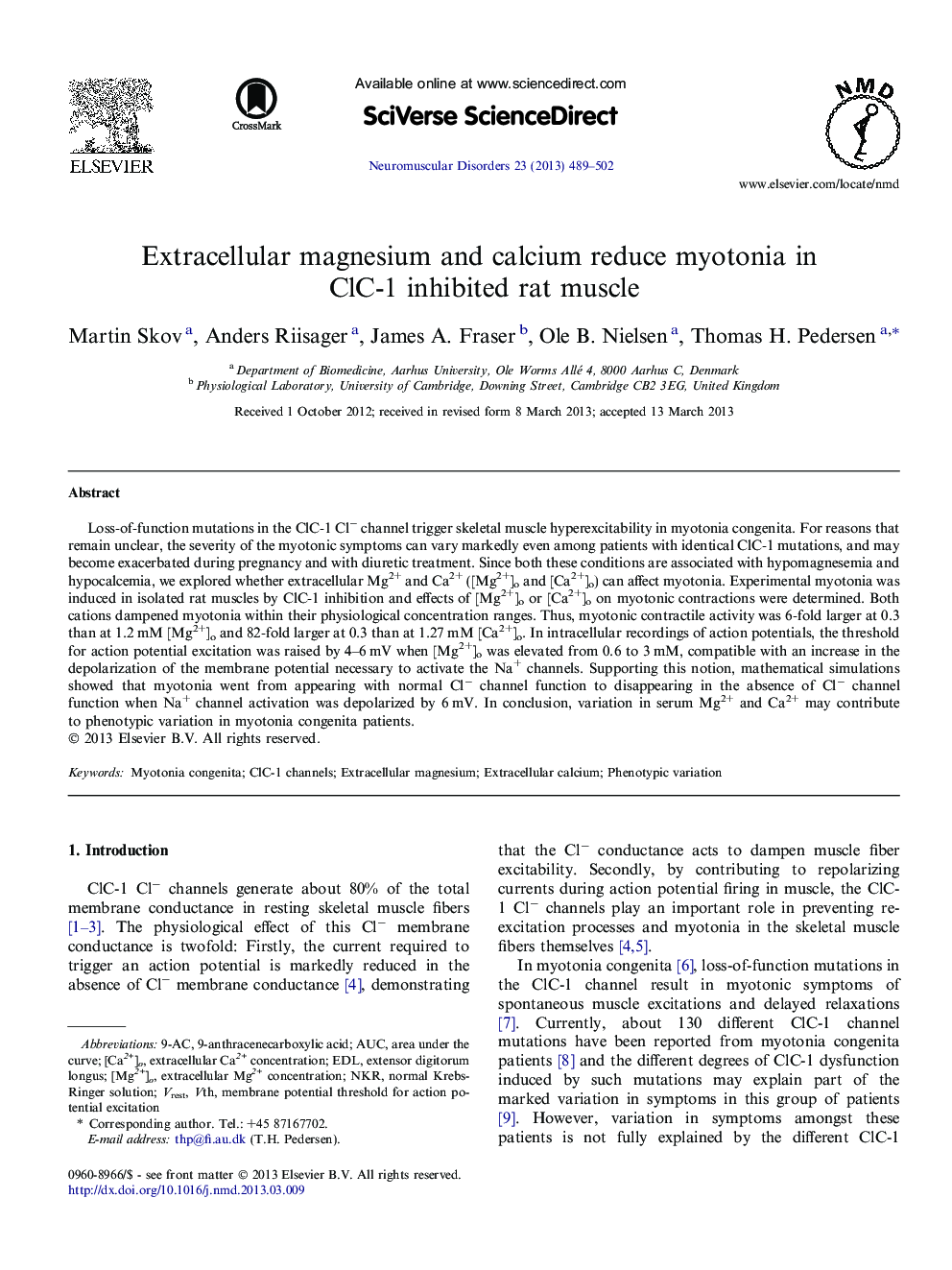| Article ID | Journal | Published Year | Pages | File Type |
|---|---|---|---|---|
| 6041661 | Neuromuscular Disorders | 2013 | 14 Pages |
Abstract
Loss-of-function mutations in the ClC-1 Clâ channel trigger skeletal muscle hyperexcitability in myotonia congenita. For reasons that remain unclear, the severity of the myotonic symptoms can vary markedly even among patients with identical ClC-1 mutations, and may become exacerbated during pregnancy and with diuretic treatment. Since both these conditions are associated with hypomagnesemia and hypocalcemia, we explored whether extracellular Mg2+ and Ca2+ ([Mg2+]o and [Ca2+]o) can affect myotonia. Experimental myotonia was induced in isolated rat muscles by ClC-1 inhibition and effects of [Mg2+]o or [Ca2+]o on myotonic contractions were determined. Both cations dampened myotonia within their physiological concentration ranges. Thus, myotonic contractile activity was 6-fold larger at 0.3 than at 1.2Â mM [Mg2+]o and 82-fold larger at 0.3 than at 1.27Â mM [Ca2+]o. In intracellular recordings of action potentials, the threshold for action potential excitation was raised by 4-6Â mV when [Mg2+]o was elevated from 0.6 to 3Â mM, compatible with an increase in the depolarization of the membrane potential necessary to activate the Na+ channels. Supporting this notion, mathematical simulations showed that myotonia went from appearing with normal Clâ channel function to disappearing in the absence of Clâ channel function when Na+ channel activation was depolarized by 6Â mV. In conclusion, variation in serum Mg2+ and Ca2+ may contribute to phenotypic variation in myotonia congenita patients.
Keywords
Related Topics
Life Sciences
Neuroscience
Developmental Neuroscience
Authors
Martin Skov, Anders Riisager, James A. Fraser, Ole B. Nielsen, Thomas H. Pedersen,
